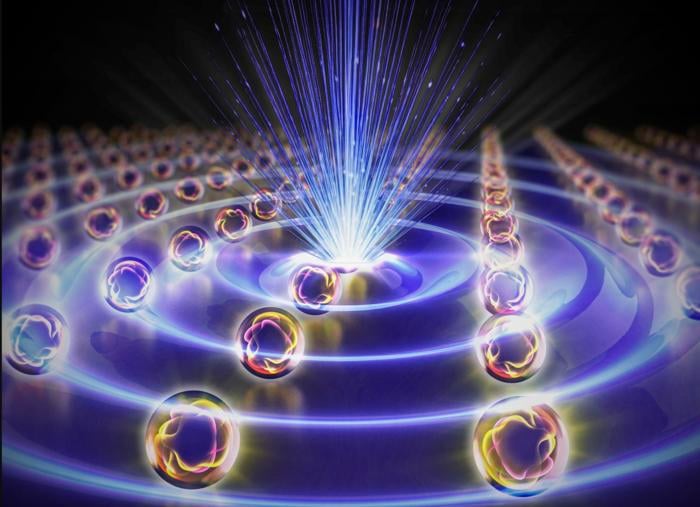Summary: Researchers have designed a new type of material called a photonic time crystal that can dramatically amplify light signals. This breakthrough could enable more sensitive detection of diseases and pollutants, while advancing technologies from lasers to optical computing.
Published in Nature Photonics, November 12, 2024. DOI: 10.1038/s41566-024-01563-3 | Reading time: 5 minutes
Imagine being able to detect a single virus particle by amplifying the tiny amount of light it emits. This could soon become reality thanks to a new breakthrough in optical materials design that overcomes longstanding technical barriers.
An international research team has developed the first practical design for photonic time crystals – materials that can exponentially amplify light signals while maintaining unprecedented control over light-matter interactions.
A New Way to Control Light
“This work could lead to the first experimental realization of photonic time crystals, propelling them into practical applications and potentially transforming industries,” says Professor Viktar Asadchy from Aalto University. “From high-efficiency light amplifiers and advanced sensors to innovative laser technologies, this research challenges the boundaries of how we can control the light-matter interaction.”
Unlike traditional crystals that have repeating spatial patterns, photonic time crystals maintain their physical structure while varying their properties over time. It’s similar to light traveling through a medium that switches between air and water quadrillions of times per second.
From Theory to Practice
The real-world potential of these materials becomes clear in medical diagnostics. “Imagine we want to detect the presence of a small particle, such as a virus, pollutant, or biomarker for diseases like cancer,” explains Asadchy. “When excited, the particle would emit a tiny amount of light at a specific wavelength. A photonic time crystal can capture this light and automatically amplify it, enabling more efficient detection with existing equipment.”
The researchers achieved their breakthrough by using an array of tiny silicon spheres that create resonant conditions for light amplification – a solution that works with existing materials and optical techniques.
The Path Forward
While previous demonstrations of photonic time crystals were limited to microwave frequencies, this new design approach could finally bring the technology into the visible light spectrum, opening up applications in communications, imaging, and sensing.
Glossary of Terms
- Photonic Time Crystal: A material whose optical properties change periodically in time rather than space
- Momentum Band Gap: A state where light pauses inside a crystal while growing in intensity
- Resonance: A phenomenon where a system responds strongly to a particular frequency of vibration
- Optical Computing: Technology that uses light instead of electricity to process information
Test Your Knowledge
- Q: How does a photonic time crystal differ from traditional crystals?
A: It varies its properties over time rather than having repeating spatial patterns - Q: What makes this new design practical compared to previous attempts?
A: It uses an array of tiny silicon spheres to create resonant conditions with existing materials - Q: What type of frequencies were previous demonstrations limited to?
A: Microwave frequencies - Q: What medical application was specifically mentioned for this technology?
A: Detecting viruses, pollutants, or disease biomarkers through light amplification
Enjoy this story? Get our newsletter! https://scienceblog.substack.com/
If our reporting has informed or inspired you, please consider making a donation. Every contribution, no matter the size, empowers us to continue delivering accurate, engaging, and trustworthy science and medical news. Independent journalism requires time, effort, and resources—your support ensures we can keep uncovering the stories that matter most to you.
Join us in making knowledge accessible and impactful. Thank you for standing with us!

